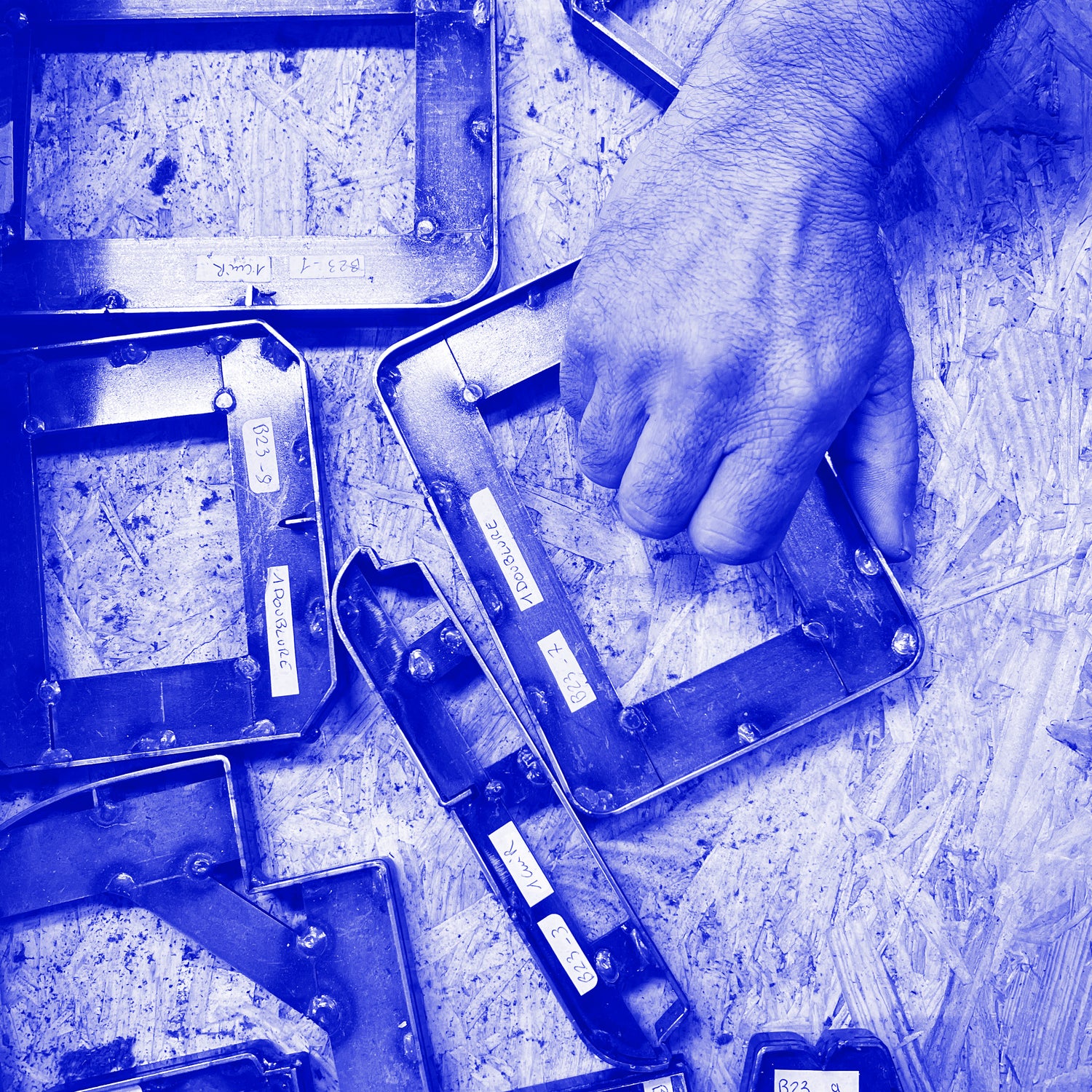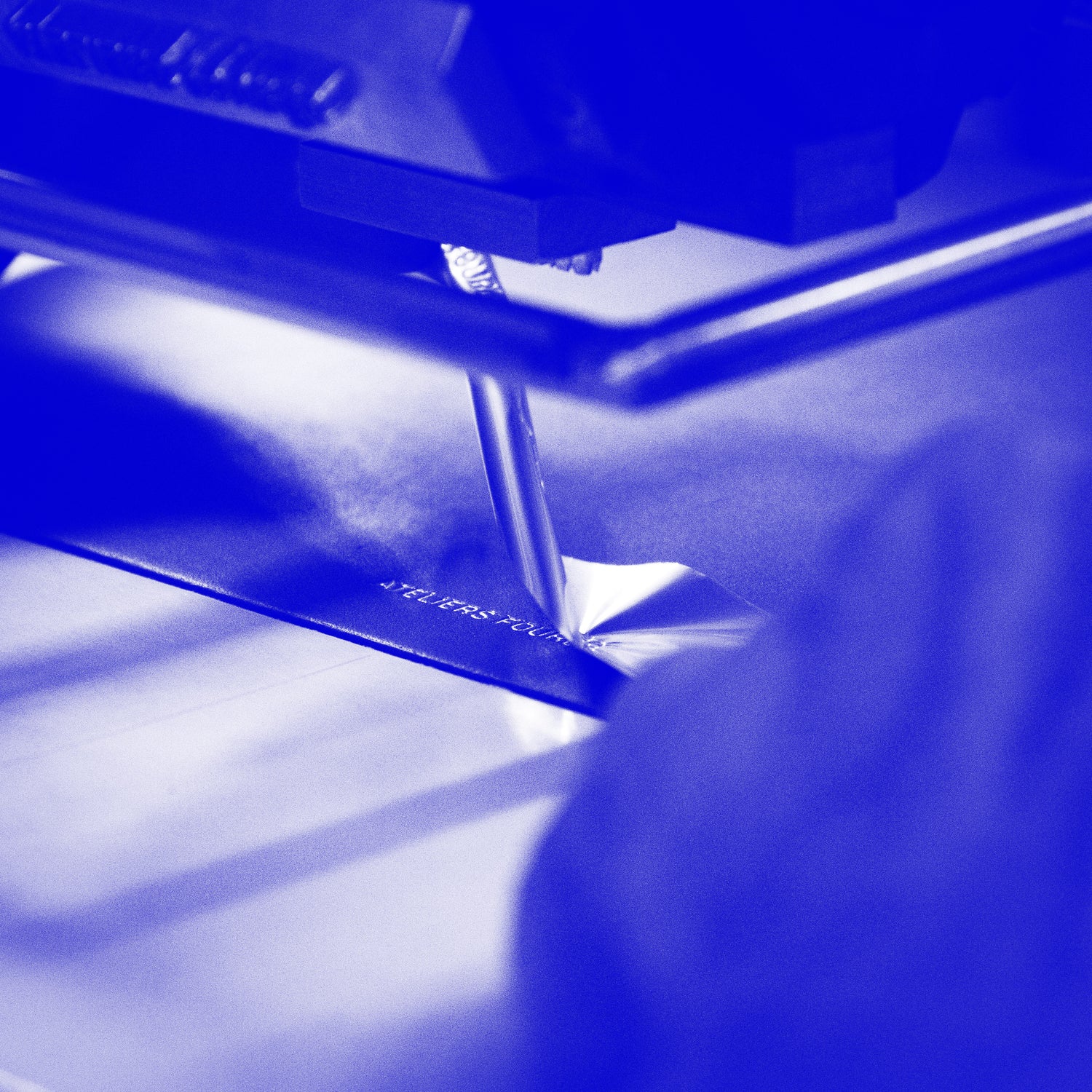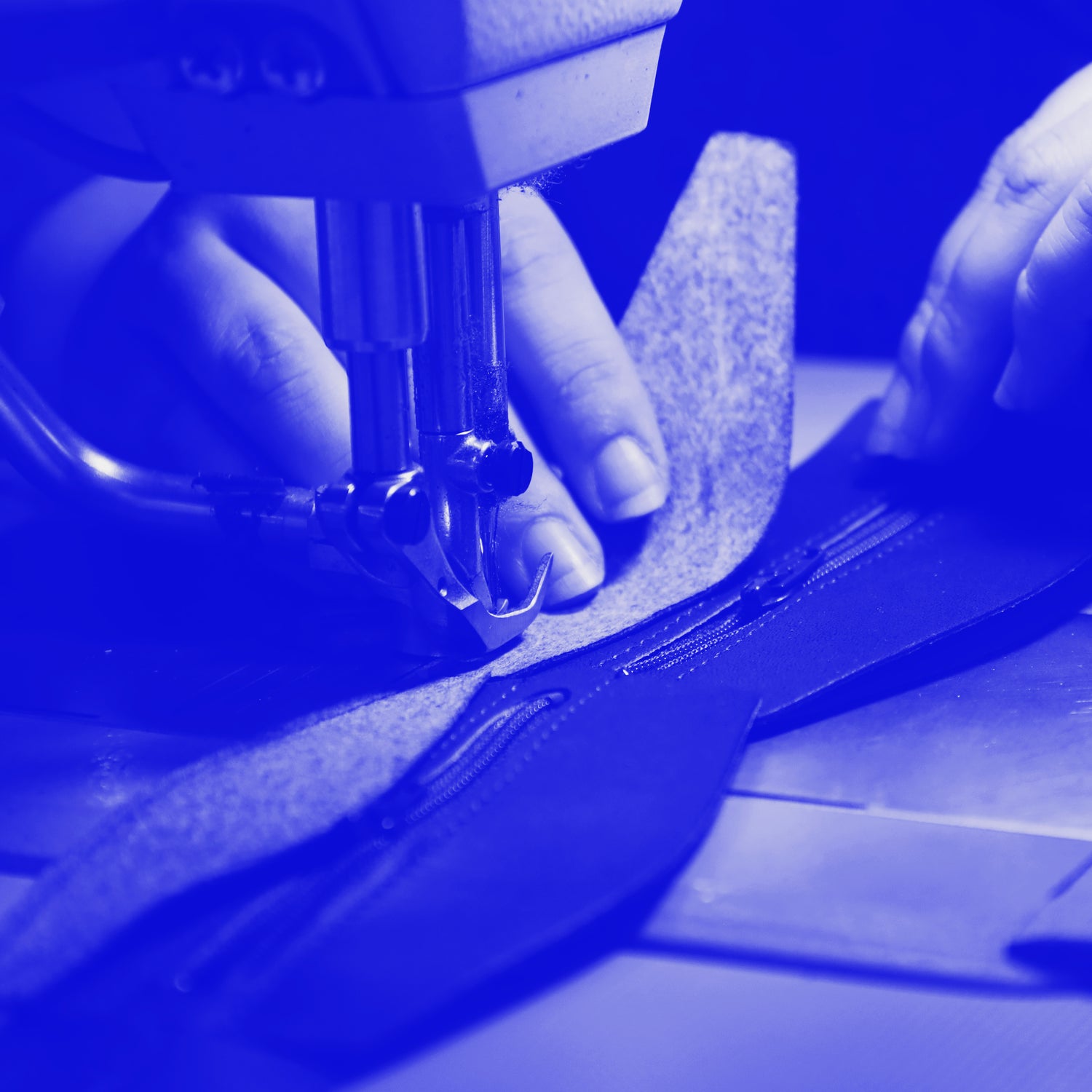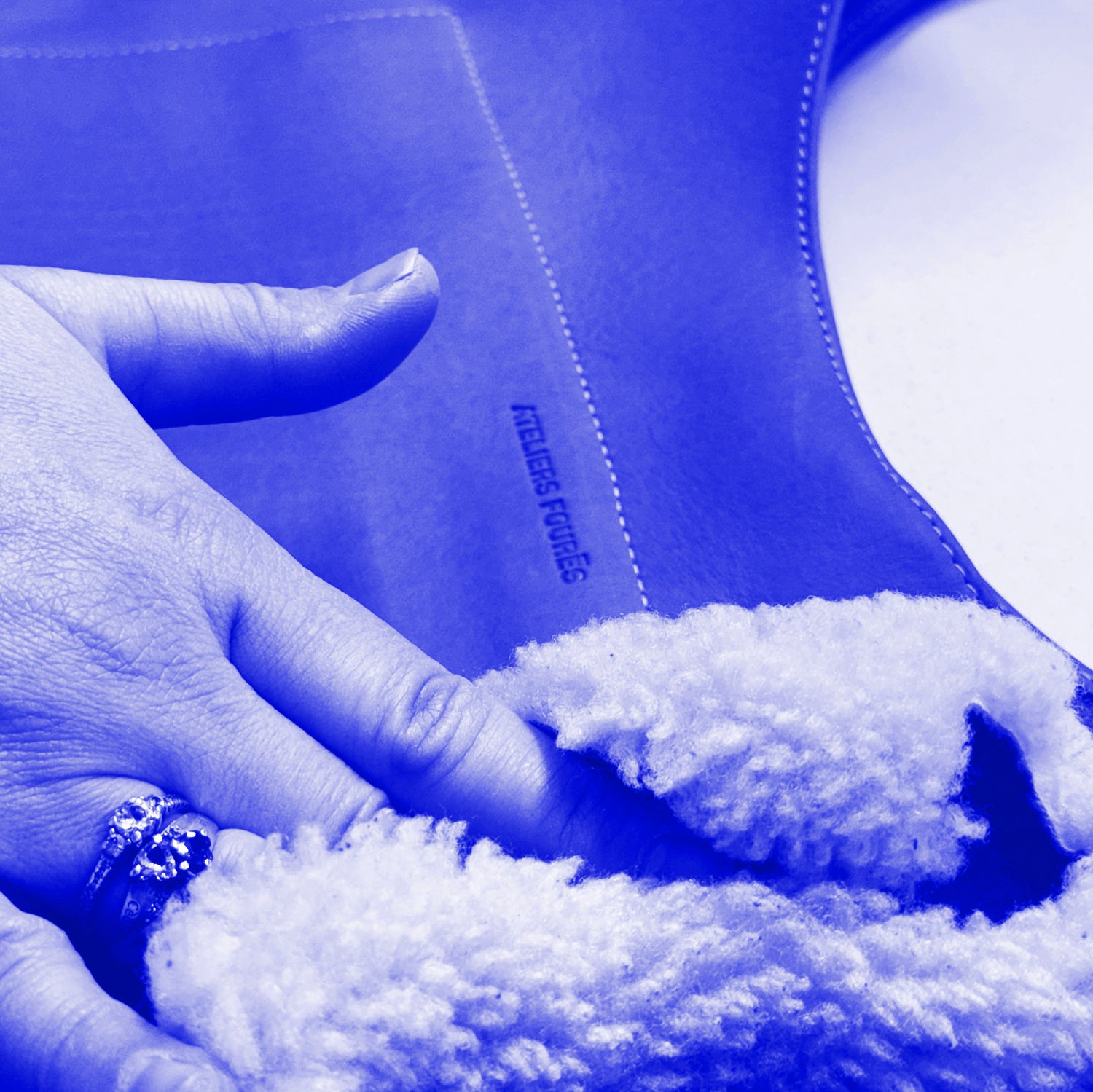How is a foures workshop bag or wallet made?
Appuyer sur ▷ et plongez-vous dans la fabrication d'Alceste et Pégase

THE CUT
Cutting is a very important position in a leather goods workshop.
- It will allow all the teams to be supplied with raw materials for the manufacture of bags and small leather goods. The pace of the cut is very important so as not to create a break in the rest of the manufacturing process.
- Leather is a natural material, on which many defects can be found: scars, punctures, sagging, wrinkles, etc. The quality of the cut will strongly determine the final appearance of the product. Cutters must judge the quality of the piece to be cut and find the ideal location on the skin for each piece needed to make bags and wallets. They must avoid defects and place small defects in places that are not very visible (under seams for example).
- Leather represents about 25% of the final cost of the product. The cutter must therefore minimize the waste rate to keep the workshop profitable. He always combines small pieces to be cut with large pieces, in order to more easily get around defects and avoid waste by throwing away large pieces of leather. At the end of his optimization work, there are only a few unusable millimeters left.
Each piece that makes up a bag or wallet is cut with a die cutter, using a hand press or a bridge press.

PREPARATION
The preparation involves 3 steps:
Step 1:
- The branding which consists of printing the logo by hot stamping. Each signed piece is placed in a template, in order to print precisely in the desired location.

PREPARATION
The preparation involves 3 steps:
Steps 2 and 3:
- Splitting , which consists of refining a piece of leather. Our leather is between 1.4 and 1.6 mm thick. The leather pieces of some items need to be refined. For example, all leather pieces of a wallet are split between 0.6 and 1 mm, otherwise the wallet would be much too thick.
Then the split pieces go to trimming which consists of refining only the edges of a piece. - The edge consists of applying a layer of glue to the place of the trimming, then folding the leather over itself. Trimming upstream limits the thickness of the edge and allows the leather to fold over properly. We obtain thus a clean and very resistant slice of leather.

THE ASSEMBLY
First, the pieces requiring a rim are rimmed, as explained above, in order to have beautiful slices of leather. Then we assemble all the pieces together (leather, linings, reinforcements, etc.), with glue or double-sided tape. .
We have two assembly tables, with specific know-how: the "bag table" and the "small leather goods table".
At the bag table, there are few assemblers, because there are few parts to assemble. At the small leather goods table, it's the opposite, because there are a lot of small parts that make up a wallet: inner tray, outer tray, linings, credit card slot, flaps, coin pocket, coin gusset, ticket pocket, zips, snaps, etc.

THE PIQUE
Once the products are assembled, they are sewn in series using a sewing machine.
Several assembly and stitching steps are often necessary and alternate to manufacture a product. Many back and forths then take place between assembly and stitching.
Here, the ratio between the number of bag stitchers and small leather goods stitchers is reversed. Indeed, the distances to be stitched on bags are much greater than on small leather goods.

THE FINISH
That’s it, your leather bag and leather wallet look like the final product. Well, almost! Here, we pay attention to detail and our finishing teams will take care of:
- Bordering the bags: this involves sewing a braid around the stitched edges in order to hide the thickness of the leather, reinforcements and fabrics, for an impeccable finish.
- Turning the bags: Most bags are assembled and stitched inside out, then turned inside out after being edged.
- Burning the wires: After the pick, many wires protrude from the products. We cut them using a wire burner equipped with a hot tip.
- Place the shoulder straps.
- Pampering the leather: using a woolen skin, we polish the leather to make it shine and remove any scratches made during the various stages of manufacturing. As this is leather that is not covered with pigments, under the effect of heat and friction, the scratches disappear completely.
- Place labels, box and package products.
It is during all these finishing stages that we carry out a final rigorous quality control for guaranteed satisfaction...
Finally, your product is ready and just waiting for one thing: to meet you!





